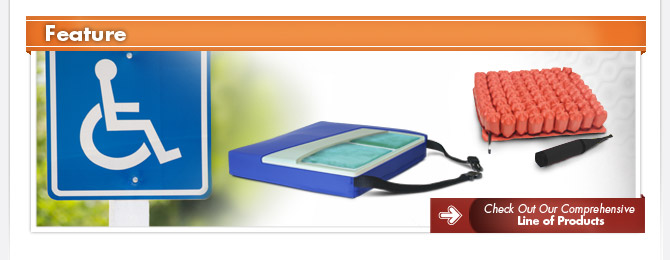|
Picking the Perfect Wheelchair Cushion
Gone are the days of a "one-size-fits-all" mentality when it comes to wheelchair cushions. Today, there's a cushion to meet every need.
Whatever the fabrication, the four primary goals of wheelchair cushions are to improve comfort, aid posture, absorb shock and reduce pressure on tissues.1 Ideally, wheelchair cushions should be purchased at the same time as wheelchairs because the two components work together as a system. When this isn't done, less-than-ideal performance can occur.
When selecting a wheelchair cushion, keep the following factors in mind to help you evaluate a cushion's clinical appropriateness1:
- Distribution of stresses on soft tissues
- How much stability the cushion provides
- Whether the cushion allows moisture to accumulate
- Heat accumulation and loss
- The cushion and cover's frictional properties
- Durability and need for maintenance
- Flammability
Each type of wheelchair cushion has its own strengths. We've created the following chart to help you select the best cushion for each of your residents.2
| |








